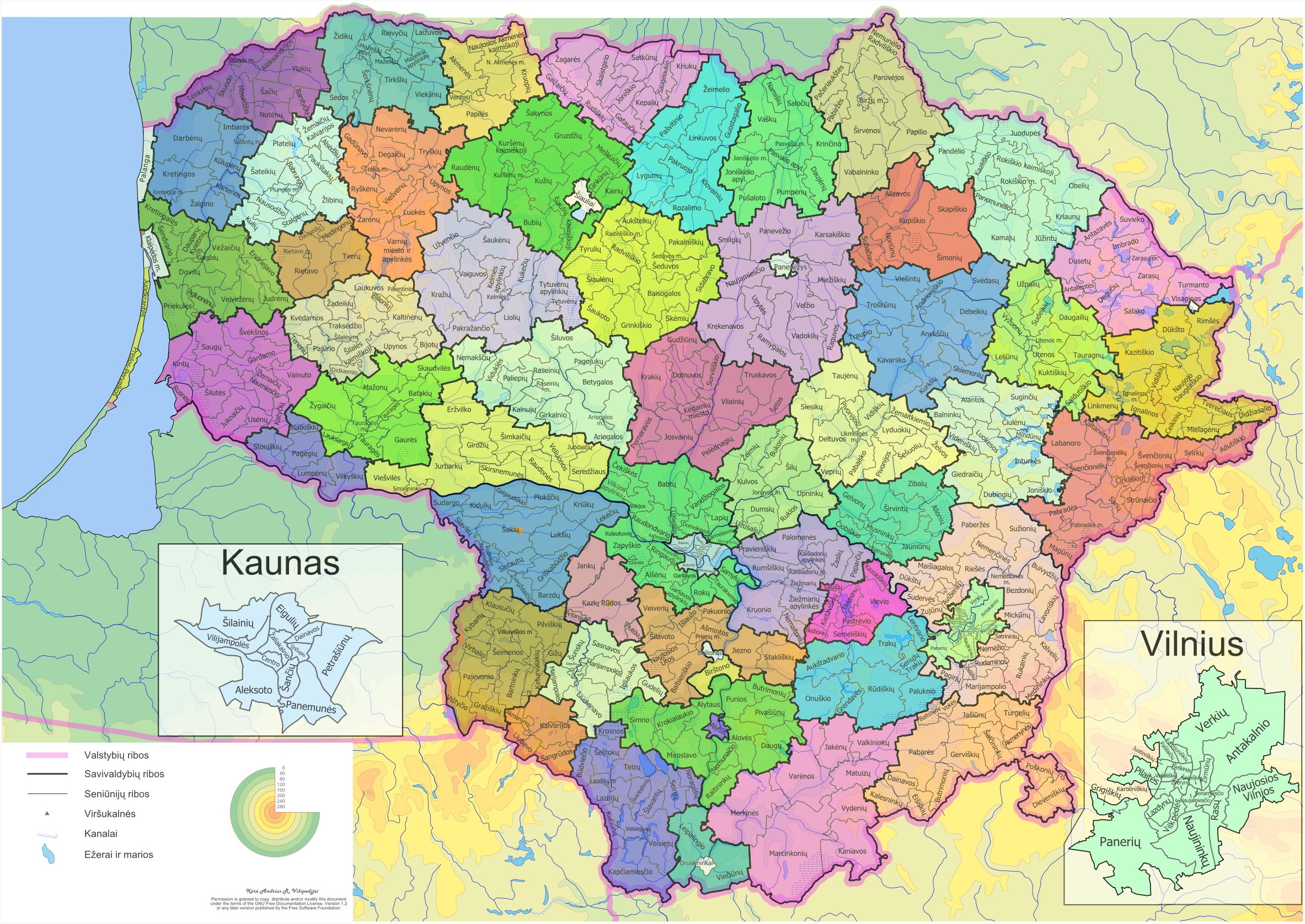|
Migonys
Migonys is a village in the Kupiškis district municipality, Lithuania. According to the 2011 census, it had 106 inhabitants. The village celebrated its 400th anniversary in 1924. There is a hill-fort A hillfort is a type of earthwork used as a fortified refuge or defended settlement, located to exploit a rise in elevation for defensive advantage. They are typically European and of the Bronze Age or Iron Age. Some were used in the post-Roma ... and 36 tumuli (28 survive) in the vicinity of the village. 18th century Lithuanian architect Laurynas Gucevičius was born in Migonys. References * Villages in Panevėžys County Tumuli {{PanevėžysCounty-geo-stub ... [...More Info...] [...Related Items...] OR: [Wikipedia] [Google] [Baidu] |
Laurynas Gucevičius
Laurynas Gucevičius ( pl, Wawrzyniec Gucewicz; 1753–1798) was an 18th-century architect from the Grand Duchy of Lithuania, and all of his designs were built there. In his youth he travelled to Italy and Paris and other countries in Western Europe, where he studied architecture under the notable contemporary neo-classical French architects, Jacques-Germain Soufflot and Claude Nicolas Ledoux. Later he was appointed professor at the Jesuit Academy of Vilnius, the predecessor of the University of Vilnius. Among the best known of his works are the Vilnius Cathedral, the town hall and the summer palace of bishops in Verkiai. The monumentality of forms and volume, the harmony with surroundings and a special treatment of antique architectural forms are the characteristics of his style. Biography Born in the village of Migonys near Kupiškis, in the Grand Duchy of Lithuania. His father was a Lithuanian peasant, Simonas Masiulis.As evidenced by the original baptismal record preserve ... [...More Info...] [...Related Items...] OR: [Wikipedia] [Google] [Baidu] |
Countries Of The World
The following is a list providing an overview of sovereign states around the world with information on their status and recognition of their sovereignty. The 206 listed states can be divided into three categories based on membership within the United Nations System: 193 member states of the United Nations, UN member states, 2 United Nations General Assembly observers#Present non-member observers, UN General Assembly non-member observer states, and 11 other states. The ''sovereignty dispute'' column indicates states having undisputed sovereignty (188 states, of which there are 187 UN member states and 1 UN General Assembly non-member observer state), states having disputed sovereignty (16 states, of which there are 6 UN member states, 1 UN General Assembly non-member observer state, and 9 de facto states), and states having a political status of the Cook Islands and Niue, special political status (2 states, both in associated state, free association with New Zealand). Compi ... [...More Info...] [...Related Items...] OR: [Wikipedia] [Google] [Baidu] |
Regions Of Lithuania
Lithuania can be divided into historical and cultural regions (called ethnographic regions). The exact borders are not fully clear, as the regions are not official political or administrative units. They are delimited by culture, such as country traditions, traditional lifestyle, songs, tales, etc. To some extent, regions correspond to the zones of Lithuanian language dialects. This correspondence, however, is by no means strict. For example, although the Dzūkian dialect is called South Aukštaitian, it does not mean that Dzūkija is part of Aukštaitija. In certain parts of some regions, dialects of other regions are spoken, while for example in Samogitia, there are three indigenous dialects (southern, northern and western Samogitian), some of which are subdivided into subdialects. Regions in politics No region, except for Samogitia, has ever been a political or an administrative entity. However, some work was done recently to delimit their boundaries more clearly, as there ... [...More Info...] [...Related Items...] OR: [Wikipedia] [Google] [Baidu] |
Aukštaitija
Aukštaitija (; literally in Lithuanian: ''Upper lands'') is the name of one of five ethnographic regions of Lithuania. The name comes from lands being in upper basin of Nemunas River or being relative to Lowlands up to Šiauliai. Geography Aukštaitija is in the northeast part of Lithuania and also encompasses a small part of Latvia and Belarus. The largest city and, though not in any strict political sense, the considered capital of the region is Panevėžys. The largest cities (by population) are: * Panevėžys – 84,587 * Jonava – 26,423 * Utena – 25,397 * Kėdainiai – 22,677 * Ukmergė – 20,154 * Visaginas – 18,024 * Radviliškis – 15,161 The region has many lakes, mainly on the eastern side. History Historically Aukštaitija had been correspondent to the Duchy of Lithuania up to the 13th century. Its initial capital most likely was Kernavė. In the treaty of Gediminas of 1322, Aukštaitija is named ''terra Eustoythen'' (land of Aukštaitians). Some German so ... [...More Info...] [...Related Items...] OR: [Wikipedia] [Google] [Baidu] |
Counties Of Lithuania
The territory of Lithuania is divided into 10 counties (Lithuanian language, Lithuanian: singular ''apskritis'', plural ''apskritys''), all named after their capitals. The counties are divided into Municipalities of Lithuania, 60 municipalities (Lithuanian: singular ''savivaldybė'', plural ''savivaldybės''): 9 city municipalities, 43 district municipalities and 8 municipalities. Each municipality is then divided into elderates (Lithuanian: singular ''seniūnija'', plural ''seniūnijos''). This division was created in 1994 and slightly modified in 2000. Until 2010, the counties were administered by county governors (Lithuanian: singular – ''apskrities viršininkas'', plural – ''apskrities viršininkai'') appointed by the central government in Vilnius. Their primary duty was to ensure that the municipalities obey the laws and the Constitution of Lithuania. They did not have great powers vested in them, and so it was suggested that 10 counties are too much for Lithuania as t ... [...More Info...] [...Related Items...] OR: [Wikipedia] [Google] [Baidu] |
Panevėžys County
Panevėžys County ( lt, Panevėžio apskritis) is one of ten counties in Lithuania. It is in the north-east of the country, and its capital is Panevėžys. On 1 July 2010, the county administration was abolished, and since that date, Panevėžys County remains as the territorial and statistical unit. History Historical documents from the 16th century mention Panevėžys as an administrative region. Municipalities Panevėžys County comprises the following municipalities: Geography Panevėžys county is the fourth largest county in Lithuania: *202 km² cities and towns; *145 km² factories and roads; *4822 km² farmland; *2109 km² forests; *200 km² lakes and streams; *406 km² other. Panevėžys County borders with Latvia, and also with Lithuanian counties of Utena, Vilnius, Kaunas and Šiauliai. Tourism The region offers 9 hotels and 7 country inns for tourists and travellers. There are 8 tourist agencies and 3 tourist information ce ... [...More Info...] [...Related Items...] OR: [Wikipedia] [Google] [Baidu] |
List Of Municipalities Of Lithuania
__NOTOC__ Lithuania is divided into three layers of administrative divisions. The first-level division consists of 10 counties ( Lithuanian: singular – ''apskritis'', plural – ''apskritys''). These are sub-divided into 60 municipalities (Lithuanian: plural – ''savivaldybės'', singular – ''savivaldybė''), which in turn are further sub-divided into over 500 smaller groups, known as elderships (Lithuanian: plural – ''seniūnijos'', singular – ''seniūnija''). At the end of its tenure as a Soviet Socialist Republic, Lithuania's administrative divisions consisted of 44 regions, 12 cities, 80 towns, 19 settlements, and 426 rural districts. The reform of this system was an immediate concern for the new government. The Constitution of Lithuania, ratified in 1992, delegated the power of establishing future administrative units to the Lithuanian Parliament (Seimas). Accordingly, the Seimas passed two fundamental laws: a 1993 law on government representation and a 1994 law ... [...More Info...] [...Related Items...] OR: [Wikipedia] [Google] [Baidu] |
Elderships Of Lithuania
A ''seniūnija'' (in English: eldership, elderate, ward, parish, or subdistrict) is the smallest administrative division of Lithuania. An eldership may comprise a very small region consisting of few villages, one single town, or a part of a big city. Elderships vary in size and population depending on their location and nature. A few elderships make up a municipality. Šilainiai (Kaunas) and Dainava (Kaunas) are the most populous elderates, with population counts over , exceeding the population of some entire municipalities. Elderships manage small-scale local matters, such as repairing pavements and dirt roads, and keep records on all families living in the eldership. The premise of the concept is that - unlike in higher administrative divisions - an elder (the leader of the eldership) could have time to talk to every person in the eldership who wants to. Modern Lithuania is divided into 10 counties, 60 municipalities, and 546 elderships. Elderships function as municip ... [...More Info...] [...Related Items...] OR: [Wikipedia] [Google] [Baidu] |
Eastern European Time
Eastern European Time (EET) is one of the names of UTC+02:00 time zone, 2 hours ahead of Coordinated Universal Time. The zone uses daylight saving time, so that it uses UTC+03:00 during the summer. A number of African countries use UTC+02:00 all year long, where it is called Central Africa Time (CAT), although Egypt and Libya also use the term ''Eastern European Time''. The most populous city in the Eastern European Time zone is Cairo, with the most populous EET city in Europe being Athens. Usage The following countries, parts of countries, and territories use Eastern European Time all year round: * Egypt, since 21 April 2015; used EEST ( UTC+02:00; UTC+03:00 with daylight saving time) from 1988–2010 and 16 May–26 September 2014. See also Egypt Standard Time. * Kaliningrad Oblast (Russia), since 26 October 2014; also used EET in years 1945 and 1991–2011. See also Kaliningrad Time. * Libya, since 27 October 2013; switched from Central European Time, which was u ... [...More Info...] [...Related Items...] OR: [Wikipedia] [Google] [Baidu] |
Eastern European Summer Time
Eastern European Summer Time (EEST) is one of the names of the UTC+03:00 time zone, which is 3 hours ahead of Coordinated Universal Time. It is used as a summer daylight saving time in some European and Middle Eastern countries, which makes it the same as Arabia Standard Time, East Africa Time, and Moscow Time. During the winter periods, Eastern European Time ( UTC+02:00) is used. Since 1996, European Summer Time has been applied from the last Sunday in March to the last Sunday in October. Previously, the rules were not uniform across the European Union. Usage The following countries and territories use Eastern European Summer Time during the summer: * Belarus, Moscow Summer Time in years 1981–89, regular EEST from 1991-2011 * Bulgaria, regular EEST since 1979 * Cyprus, regular EEST since 1979 ( Northern Cyprus stopped using EEST in September 2016, but returned to EEST in March 2018) * Estonia, Moscow Summer Time in years 1981–88, regular EEST since 1989 * Finland, regu ... [...More Info...] [...Related Items...] OR: [Wikipedia] [Google] [Baidu] |


